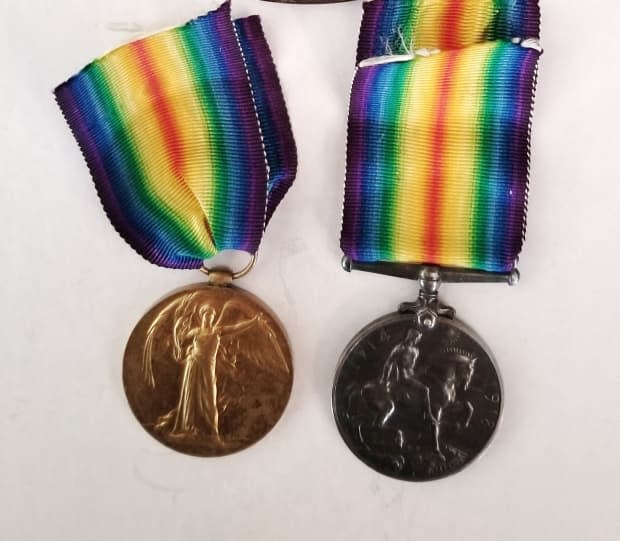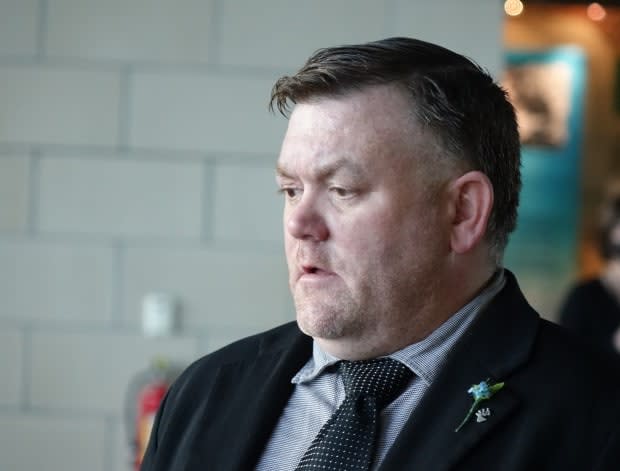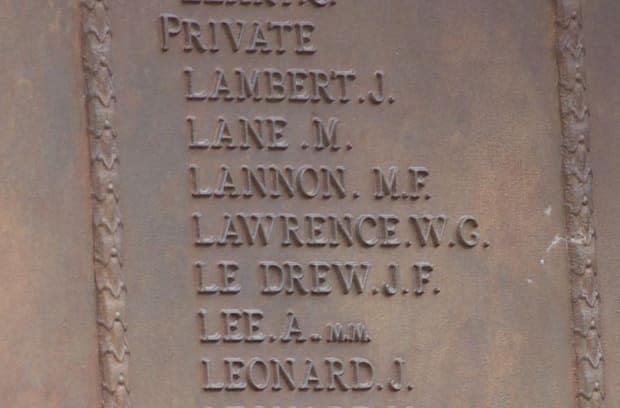Human remains found in Belgium in 2016 identified as Newfoundland Regiment member
The remains of a 17-year-old soldier were unearthed four years ago in Belgium — and it turns out they are those of a member of the Newfoundland Regiment, who fought in the First World War and died 103 years ago.
The details of the discovery and identity were announced Tuesday at an event at The Rooms in St. John's, with the provincial archivist being acknowledged as having played a major role in the process.
Pte. John Lambert died Aug. 16, 1917. He was born July 10, 1900, in St. John's, according to officials with the Department of National Defence and the Canadian Armed Forces.
His remains were discovered during an archeological dig near St. Julien, Belgium. There were three other sets of human remains found, but it's not clear if the others have been identified.
Lambert's name was memorialized on the Beaumont-Hamel Newfoundland Memorial in Bowring Park, which commemorates soldiers from Newfoundland who died during the First World War and have no known grave.
Lambert lied about his age to fight in war
According to a biography on the federal government's website, Lambert lied about his age and claimed he was 18 years old when, in fact, he was 16.
He joined the 2nd Battalion in Scotland, and made his way to France, where he joined the 1st Battalion of the Newfoundland Regiment in June 1917. Members served with the 88th Brigade of the 29th Infantry Division of the British Expeditionary Force.

On Aug. 16, 1917, an attack was launched by the Newfoundland Regiment — in what become known as the Battle of Langemarck — with members successfully overtaking the enemy's trenches and bunkers.
Lambert suffered wounds during the attack, and later died from them. Another 26 men were killed in that battle.
N.L.'s provincial archivist played key role
Lambert's remains were found alongside a number of artifacts in 2016. Those included a shoulder title of the Newfoundland Regiment, an Inniskilling Fusiliers cap badge, two Hampshire Regiment shoulder titles, general service buttons, British bullets and a few other small items.
DNA samples from the soldier's relatives made it possible to confirm Lambert's identity — making it the first time a Newfoundland Regiment soldier has been identified by this process, according to the provincial government.

It was Greg Walsh, the provincial archivist and director of The Rooms' provincial archives, who "provided vital archival research to locate Private Lambert's [relatives]," according to a Newfoundland and Labrador government media release.
Walsh, speaking to reporters at Tuesday's event, praised Lambert for being "so courageous."
When pressed about the fact that this was the first local case of its kind, Walsh acknowledged the significance, but noted it was a team effort.
"I just feel like it was one of the most rewarding things I have ever done, I have ever been asked to do, and I'm so proud of the work I did, and the work we did as a team," he said.
"I do feel like we have put a name to a face and that's a huge part of what we do as archivists and we don't get to do that everyday."
Patience and tenacity
How Walsh got to the point of identifying the remains was a lesson in patience and tenacity.
"Military records confirmed there were 16 Newfoundland Regiment soldiers who had fought in the vicinity, with no known grave. Walsh, began his year-long search with this list of 16 soldiers and proceeded to find living descendants for 13 of the 16," reads a statement.
Walsh combed through many information sources, including vital statistics registers, census records, newspaper records, phone books and online search engines, to find anything that might help with the process.
Ultimately, it was a combination of historical, genealogical, anthropological, and DNA analysis that helped the Casualty Identification Review Board identify Lambert, according to the government's website.

Col. Perry Grandy, who is chairman of the Royal Newfoundland Regiment Advisory Council, said identifying Lambert, and the process that led to that, are both significant.
"This has connected our modern day life with something that happened in history that we only read about," Grandy said.
Burial to come at 'earliest opportunity'
The Canadian Armed Forces have notified Lambert's surviving next of kin, and are providing them with ongoing support, according to the government.

Lambert, who was born to Richard and Elizabeth Lambert, will be buried at the Commonwealth War Graves Commission's New Irish Farm Cemetery in West-Vlaanderen, Belgium, as the "earliest opportunity," according to the federal government.
It's expected that family members, along with representatives from the Canadian, United Kingdom and Belgian governments will attend, as will representation from the Canadian Armed Forces.


